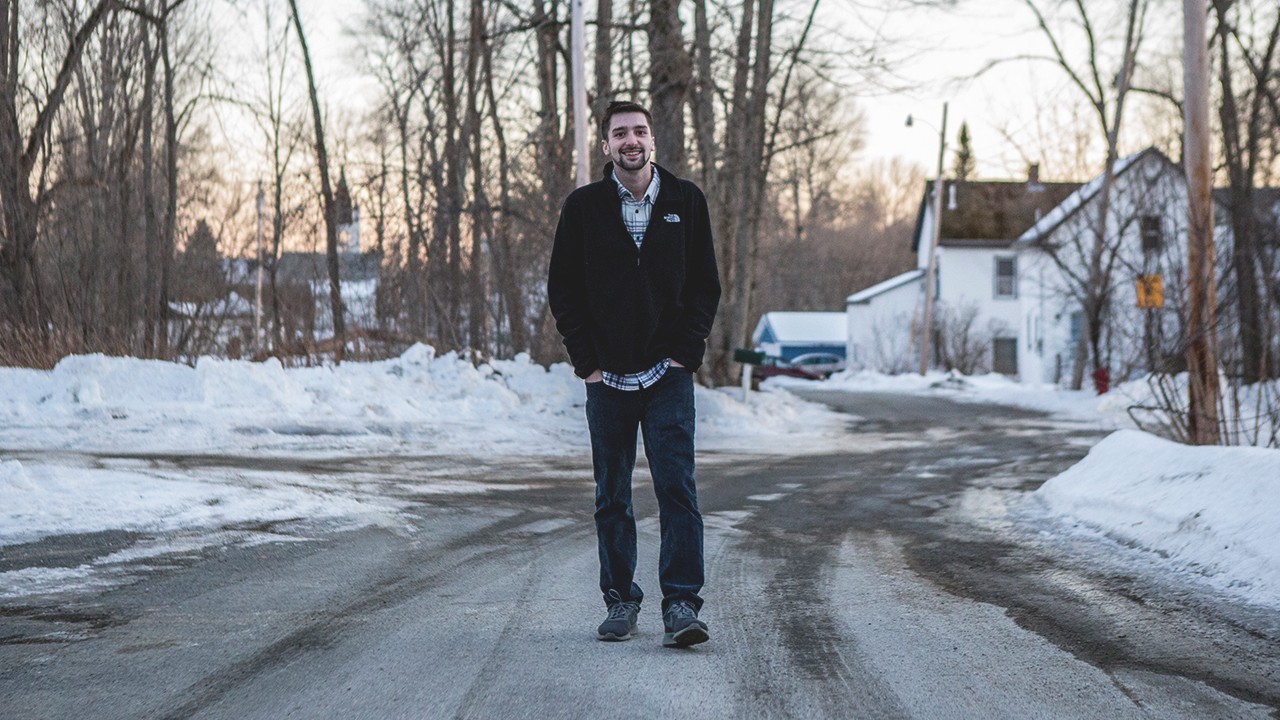Kerem Yucel/AFP/Getty Images
High Wire is Maia Szalavitz's reported opinion column on drugs and drug policy.The most important questions remaining in the many lawsuits against opioid manufacturers and distributors are not about how much the final payouts will be—clearly, huge sums of money are coming. Instead, they center on who exactly will get the funds and whether they will be spent effectively. Many of the fiercest battles lie ahead.Surprisingly, however, early signs from the bankruptcy case of Purdue Pharma—the manufacturer of Oxycontin and one of the key players in starting the overdose epidemic—suggest that at least the first multimillion-dollar payment might quickly go exactly where it is needed: to programs that work to preserve the lives and health of people with addiction, regardless of whether they're abstinent.Boosting funding to such organizations—known as “harm reduction” programs—could kickstart a long-overdue revolution in the way we care for and treat addiction in the U.S.The details are complicated, as you might expect in litigation with 2,600 states, cities, counties, and other localities all seeking a piece of multi-billion-dollar Big Pharma pie. Many of the plaintiffs argue that Purdue's filing for bankruptcy will deprive them of a just settlement. They would prefer that Purdue’s riches remain part of the spoils that will be divided in another case against opioid manufacturers and distributors, which is known as the opioid multi-district litigation (MDL) and may be settled this week.Despite those objections, Judge Robert Drain of the United States Bankruptcy Court in White Plains, New York, accepted Purdue’s bankruptcy filing and has begun to forge a plan to distribute its billions. On October 11, he agreed to a stay in the bankruptcy case to give the parties time to work out major disagreements.One advantage of distributing the money via bankruptcy, rather than through civil and criminal cases, is that stricter conditions can be set on spending. “Bankruptcy has guardrails on it to make sure that how it plays out will be open, will be public, and will be as equitable as possible,” said Lindsey Simon, assistant professor of law at the University of Georgia School of Law and an expert on bankruptcy.The tobacco settlement of 1998 is an example of what can happen without such guardrails: $246 billion was expected to be paid out over 25 years to fight smoking but, for example, in the current fiscal year, less than 3 percent of the money went to prevention or treatment of tobacco addiction. That is not atypical. Most money just went into states’ general budgets, and some Southern states even used settlement funds to support tobacco marketing.Via bankruptcy, Purdue’s money will become part of a trust. A recently appointed committee of nine members—including four people with personal or family experience of opioid addiction—will help determine how that money is spent, though the judge has to approve their decisions. In the case stipulation agreed upon by that committee and by Purdue, a plan was proposed to make a $200 million fund available within six months for harm reduction and addiction recovery groups.If the terms are accepted by the other parties, like state and local governments, that $200 million would be the biggest amount ever spent to support programs that don’t require people to be abstinent before they can receive help—a group far larger at any given time than those currently ready or able to completely quit. (According to Simon, the parties seem reasonably likely to agree to these terms because it’s a relatively small sum of money compared to almost-certain multi-billion-dollar settlements and, strategically, they know they have to pick their battles).“The impact of this money would be huge,” said Daniel Raymond, deputy director of planning and policy at the Harm Reduction Coalition, whose group would help vet harm reduction agencies for funding, “It would be the single largest infusion of resources into harm reduction that we've ever seen in this country.”
Watch More From VICE:
The stipulation directs the money to two specific types of groups—harm reduction centers and recovery community organizations (RCOs).Harm reduction centers typically provide clean needles, access to the overdose reversal drug, naloxone, and, if they were to be legalized, many would operate overdose prevention sites, where people could use drugs under medical supervision to prevent overdose deaths. RCOs, meanwhile, are aimed at people who want to stop problematic drug use or sustain abstinence, but unlike traditional self-help groups, they don’t prescribe one specific way to recover and don’t reject people who aren't seeking abstinence. Neither of these types of services are widely available in the current treatment system. A grant application process will be devised to allow appropriate groups to get funded.Importantly, the money wouldn’t simply fund existing for-profit treatment programs, which rarely use evidence-based approaches, are too-frequently outright fraudulent, and often decry the use of medications like methadone and buprenorphine, which are the only treatments proven to cut the death rate by 50 percent or more.All of the centers in question would offer referrals and ease connections to other services like healthcare and addiction treatment; some actually provide buprenorphine and other medical treatment themselves. Some provide housing or referrals to housing that doesn't require abstinence: the main idea being that people who use drugs deserve humane treatment and that treating people kindly often results in them treating themselves better.Because harm reduction is often seen as controversial—some argue that it “enables” drug use, even though research shows that participants are more likely to recover than those who don’t access these programs—significant funding would help boost its legitimacy and sustain groups that often run on a shoestring budget.For decades, for example, federal funding of syringe service programs was banned and many states still restrict it—even though syringe programs have helped reverse HIV epidemics in many states and countries, including New York, which once had the world’s largest epidemic among people who inject drugs.While noting that the money is only a drop in the bucket in terms of helping those harmed by the epidemic, former Obama administration “drug czar” and now executive director of the Grayken Center for Addiction at Boston Medical Center, Michael Botticelli said that the funding of harm reduction and recovery support could be “an important sign” of what’s to come in the overall settlement.Regina LaBelle, director of the addiction and public policy institute at Georgetown University and also a former senior Obama drug policy official, said that even though $200 million is not a lot in light of the overall settlement, “It’s going to make a difference.” She notes that right now, many of the groups that would be eligible for this money are so small they need to have bake sales and other small-scale fundraisers just to be able to afford needles and other necessary supplies.Typically, the recovery community organizations that stand to get funding have meetings for people with various goals, including 12-step groups and alternatives. They also provide and sometimes train “peer coaches” who can work one-on-one with folks who want that type of care. These coaches are taught to advocate for their clients when navigating the healthcare, addiction treatment, and other social-service bureaucracies—and to not impose their own ideas about what recovery should be. They may also provide naloxone or refer people to harm-reduction services. Generally, these groups are run by people in recovery themselves or family members.“Nothing is mandatory,” said Dona Dmitrovic, executive director of the Foundation for Recovery in Las Vegas, which provided RCO services to 4,000 people last year. As in harm reduction, the idea is to “meet people where they are” and offer help accordingly.If, for example, someone wants medication treatment, they work with doctors and programs that provide that. If someone needs shelter or mental health care, they help them access those services. To be eligible for this settlement funding, RCOs need to have been previously recognized by the U.S. Substance Abuse and Mental Health Services Administration (SAMHSA), which requires using evidence-based practices.If these two kinds of groups do receive significant funding from the Purdue bankruptcy, it could help bring long-overdue change to the addiction treatment system, which is still overwhelmingly dominated by inpatient and outpatient rehab programs that are focused on getting people to accept the 12 steps of Alcoholics Anonymous (AA) and Narcotics Anonymous (NA) as the one way to recover.This ideology has been especially problematic for people with opioid use disorder because NA’s official policy is that people taking medication like bupe aren’t considered to be “in recovery,” which means they are not permitted to speak, even from the floor at many meetings. The group actually encourages ending medication use—despite the fact that continuing with buprenorphine or methadone doubles people’s chances of survival.Harm reduction groups and RCOs offer a real alternative. And, as they become more and more visible, people with addiction and their families will be more likely to vote with their feet and choose treatment that isn’t one-size-fits-all. That will pressure other programs to either change for the better—or fold.While $200 million isn’t much in the scheme of harm from the opioid epidemic, and more also needs to be done to help pain patients, in the hands of groups that have never received adequate funding, it could be a tremendous step forward. And one that could finally shift the system toward providing care that actually works.Follow Maia Szalavitz on Twitter.Sign up for our newsletter to get the best of VICE delivered to your inbox daily.
Advertisement
Advertisement
What’s the significance of the money being bankruptcy money?
Advertisement
Watch More From VICE:

Ok, so where exactly would the money go?
Advertisement
What impact would this have on all the people affected by the opioid crisis?
Advertisement
Advertisement
